6.1: Green Marketing Strategy and the Four P's of Marketing
- Page ID
- 23198
- Explain green marketing strategy and how to best incorporate a green strategy into a company’s overall vision.
- Define how sustainability works in the marketing mix.
- Understand consumer market segmentation.
- Describe marketing tools to help promote a brand.
Kermit the frog may have had it right—“It’s not easy being green.” There is a lot to consider when creating a sustainable marketing strategy. It is not simply adding “green” to your brand platform or announcing that you support a worthy cause. To be most successful, a commitment to sustainability should be part of the company’s overall vision and an integral part of the company’s values and fundamental beliefs. For example, Seventh Generation, a Vermont-based company that makes personal and household cleaning products, adheres to a model of deeper business purpose (see Chapter 8). The company’s founder, Jeffrey Hollender, had a vision to create and nurture a company with sustainability at the core. Everything that the company does focuses on the triple bottom line of people, planet, and profit for the greater good. From their products—which are made using only natural, recycled, or renewable materials—to their philanthropic efforts that seek to help create a sustainable community, Seventh Generation employs a well-integrated sustainability vision and strategy.
A strong sustainability strategy includes understanding how the company impacts the people and environment in which it operates and consciously applies sustainable practices throughout every element of its business. Companies such as Timberland (see Chapter 11) and Procter & Gamble have adopted sustainability practices and have set specific and measureable goals—both short and longer term—to reduce their company’s carbon footprint. This includes actively examining the carbon lifecycle of their products—from the raw materials used in manufacturing all the way through to the recycling phase to ensure that they are meeting these goals.
Inherent in this practice is the concept of radical transparency, whereby everything the company does is transparent and visible to the consumer and community at large, which contributes to the credibility of the sustainable brand. Measureable goals contribute to radical transparency as they provide clear and actionable goals to which the company can commit and progress against. For example, Unilever’s sustainable strategy commits to aggressively reducing their environmental impact and enhancing livelihoods by the year 2020. Unilever has made sustainability the cornerstone of their mission with clear, transparent goals against which they will be measured.“Unilever Sustainable Living Plan,” Unilever, www.unilever.com/images/UnileverSustainableLivingPlan_tcm13-239379.pdf.
To view Unilever's Sustainable Living Plan, visit www.unilever.com/images/UnileverSustainableLivingPlan_tcm13-239379.pdf and go to page seven.
Radical Transparency
Radical transparency involves everything a company does being completely transparent and visible to the consumer and all stakeholders.
A marketing plan is derived from the company’s vision and integrates an organization’s overall goals and marketing objectives (what goals they want to achieve) and strategies (how they are going to achieve them) into a cohesive plan, typically on an annual basis. The green marketing plan focuses on the ideal marketing mix to achieve maximum profit potential while adhering to sustainability principles.
The key elements of the marketing plan are as follows:
- Corporate goals. These are the overall company goals that should be in line with the company’s vision and long-term strategic plan.
- Objectives. Determine marketing objectives. Objectives should be stated clearly and should stem from the overall company’s vision and goals. Objectives should have specificity, such as to grow to 5 percent market share.
- Strategies. After objectives are determined, strategies (which are how you are going to achieve the objectives) should be developed. An example is to convert all product ingredients to those that are locally sourced to help meet the objective of minimizing the company’s carbon footprint.
- Tactics. Tactics are the specific means or programs to achieve the strategies and this includes the four Ps (see the following). One example is identifying the local suppliers and costs to achieve a buy local strategy.
- Market. Determine what market you are participating in and what stage your product or service is in its life cycle: development, introduction, growth, maturity, or decline (see the following sidebar titled “Product Life Cycle”). For green products especially, there may be opportunity to add a new dimension to a mature category with a new product benefit. For example, in the mature category of yogurt, Stonyfield Yogurt (see Chapter 13) was able to breathe new life into the category when they first launched in 1984 with an organic product. Adding credibility to their sustainable brand was their “Profits for the Planet” program tactic, which commits 10 percent of annual profits to individuals and organizations working to restore and protect the environment.
- Consumer target audience. Identify who is your potential customer. In a study conducted by OgilvyEarth, there are varying degrees of how “green” consumers are. From die-hard “super greens” to “green rejecters,” marketers need to determine who best to target to achieve their marketing objectives.
There are several keys to creating an effective green marketing strategy:
- Understand the market and the underlying values and beliefs of your consumers and other key stakeholders, and develop a marketing plan that aligns well with these values and beliefs.
- Make sure that the products and services balance the needs of meeting consumer’s desires for quality, convenience, and affordability with sustainability goals.
- Be genuine and radically transparent throughout the marketing mix. In marketing communication and promotion efforts, actively engage consumers with issues that are meaningful to them, and listen to them. Give them a voice.
- Create alliances. Look for sustainable business partners, such as those from whom you source ingredients or other materials; nongovernmental organizations (NGOs) that complement your business; and sustainable industry leaders and other like-minded businesses.
- Measure performance against key metrics and communicate progress. Radical transparency includes being able to share progress against sustainability goals with consumers and the community at large.
Product Life Cycle
There are basically five stages of the product life cycle, including the development, introduction, growth, maturity, and decline stages. Customers will only be able to purchase products in the latter four stages because the product typically has not yet been placed on the market in the development stage. Some companies, however, like computer software companies, do release a limited number of products during the development phase to help with their beta testing.
Sustainable Marketing Mix
The marketing mix, also known as the four Ps of marketing, is the combination of product, price, place (distribution), and promotion. Marketers develop strategies around these four areas in marketing to enhance branding, sales, and profitability. The marketing mix forms the foundation for creating a sustainable marketing strategy. Sustainability marketing, unlike traditional marketing, needs to adhere well to sustainability principles throughout the marketing mix. This helps to (1) strengthen the brand identity; (2) provide credibility; and (3) ensure honest, truthful communications and radical transparency with stakeholders, one of the cornerstones of good sustainability marketing principles.
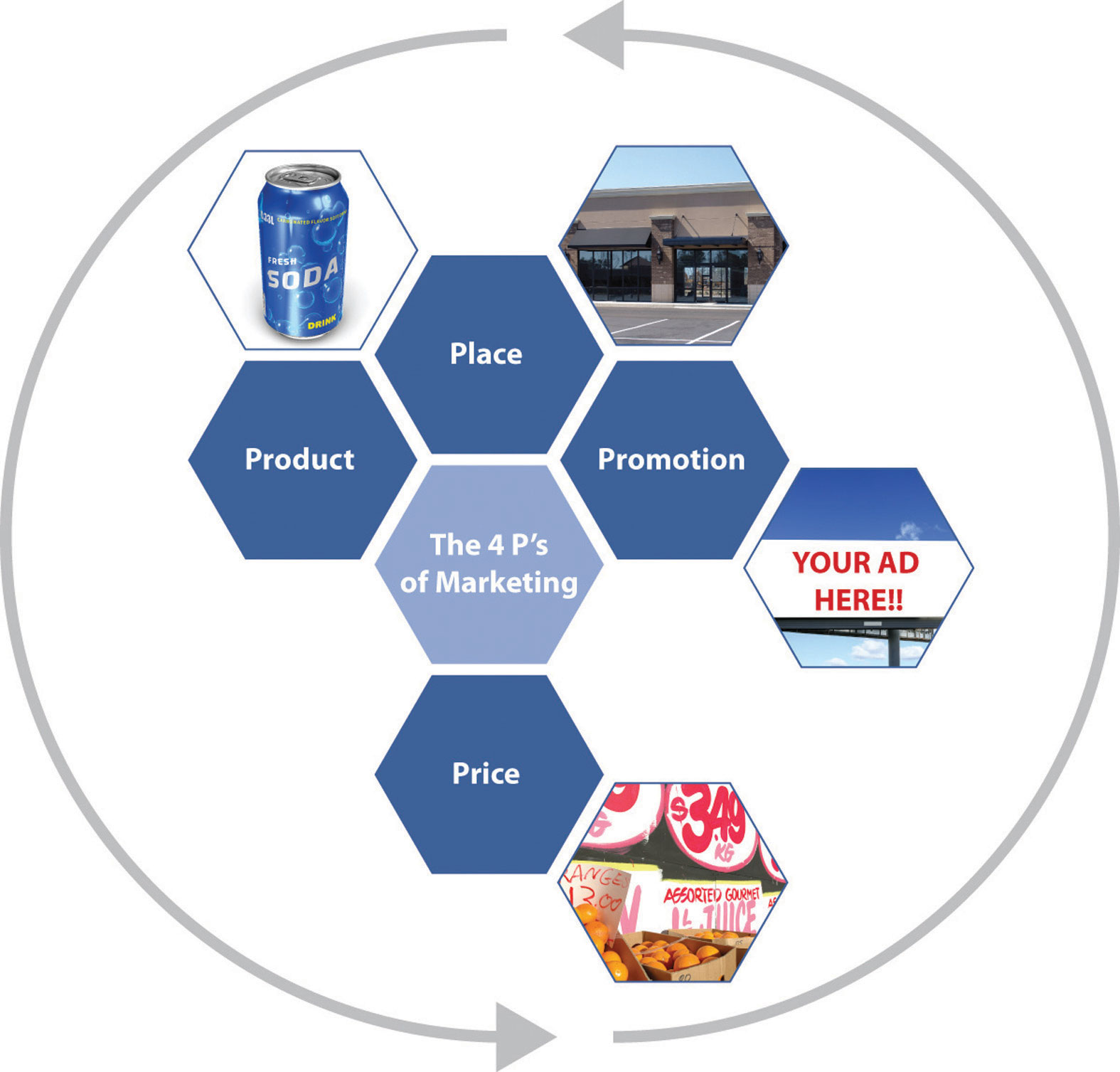
Product
A product is a tangible good or an intangible service that is marketed to a consumer. A tangible good is something that can be seen, heard, tasted, felt, or seen. Products such as coffee, milk, biofuel, laundry detergent, and outdoor apparel are all examples of tangible goods.
Intangible products are mostly service based and provided by someone directly in contact with customers, such as mutual fund investment services, health care services, and consulting services. Sometimes the intangible service results in a tangible product, such as a lawyer providing legal advice in filing for a product patent. The intangible product is the lawyer’s services, and the tangible product is the patent itself.
When looking at a sustainable-marketed product, consideration should be made for sourcing of materials, ingredients used, and the manufacturing of the product. This includes using all natural and organic materials, sourcing local and through fair trade suppliers, utilizing environmentally friendly materials, and using lean manufacturing and distribution methods that minimize the company’s carbon footprint. For example, Unilever (the corporate owner of Ben & Jerry’s) has committed that all ingredients in Ben & Jerry’s ice cream be sourced through fair trade suppliers and certified as such by 2013.
Fair Trade
Fair trade is a global trade system that ensures producers get a fair price for their goods. It is the cornerstone of a sustainable economy. Starbucks began purchasing Fair Trade Certified coffee in 2000, helping to grow the market for Fair Trade Certified™ coffee in the United States. Fair Trade Certified™ coffee empowers small-scale farmers organized in cooperatives to invest in their farms and communities, protect the environment, and develop the business skills necessary to compete in the global marketplace.“Responsibly Grown and Fair Trade Coffee,” Starbucks, http://www.starbucks.com/responsibility/sourcing/coffee.
Companies, both large and small, are undertaking sustainability initiatives. The most successful companies in doing this sincerely embrace sustainability principles at its core; set clear and measurable goals; and clearly, transparently, and truthfully communicate with their stakeholders about the ecological and social impacts of their products and services. These companies use the four Ps to enhance and fulfill their sustainable positioning to be true to the vision throughout their marketing mix.
Seventh Generation is a pioneer in sustainability marketing and a leader in natural household cleaning products. Deriving its name from the Great Law of the Iroquois that states, “In our every deliberation, we must consider the impact of our decisions on the next seven generations,” Seventh Generation has long been practicing sustainability throughout its marketing mix for over twenty years. Their entire product line of household and personal care products—from laundry detergents to baby wipes—are carefully designed and manufactured to minimize their impact on the environment. Using all natural, renewable, and recyclable resources, Seventh Generation is working to “help protect human health and the environment.”“Green Cleaning Products,” Seventh Generation, http://www.seventhgeneration.com. (See Chapter 8 for more information on their approach to sustainable marketing.)
Timberland’s Earthkeepers product line is the company’s most visible effort to put their environmental values into their products and market it. Products produced under the Earthkeepers label feature (1) reduced use of harmful chemicals, including no PVC and water-based adhesives; (2) use of recycled materials, including plastic bottles made into linings and laces and recycled rubber sole boots made with up to 30 percent recycled rubber; (3) use of organic materials, including organic cotton; and (4) use of recycled packaging materials, with all boxes made of 100 percent postconsumer recycled packaging cardboard. Timberland has implemented eco-labels to communicate information to consumers about the impacts of their products and has implemented life cycle management to quantify the environmental impacts of the products that it produces. (See Chapter 11 for more information.)
Another example is General Electric. The company committed to utilizing clean technologies and reducing their environmental footprint in 2005 with their ecoimagination program. Since then, a hybrid engine train has been put into development, a state-of-the-art wind turbine blade has been manufactured, and a superefficient washing machine and coal-gasification technology have been introduced. General Electric, in particular, is noteworthy for its pledge to double its investments in the research and development of environmentally friendlier technologies. The total budget for research and development went from $700 million in 2004 to $1.5 billion in 2010. General Electric has been consistently named in the top ten of Global 100 Most Sustainable Corporations.“GE and Unilever Step Forth to Write a New Agenda,” New Economy, http://www.theneweconomy.com/business-and-management/sustainability/ge-and-unilever-step-forth-to-write-agenda.
In the garment industry, Earthtec is an emerging sustainability product marketing clothing manufacturer. Using postconsumer recycled polyethylene terephthalate plastics (such as discarded water bottles), Earthtec converts landfill-bound bottles into high-performance fabrics and clothing. The company is dedicated to using recycled or renewable materials in every single article of clothing they make. Beyond their product line focused on sustainability, the company has incorporated a streamlined manufacturing model that is designed to minimize their carbon footprint.“Earthtec—Clothing with a Conscience,” Earthtec, www.earthtec.com/our_story/conscience.
An example of sustainable intangibles is the services provided by the mutual fund company Pax World. Pax World is a recognized leader in the field of sustainable investing—the full integration of environmental, social, and governance (ESG) factors into investment analysis and decision making—in its mutual fund offerings.“About Pax World,” Pax World, www.paxworld.com/about. Pax World provides the intangible service of investment advice with a strong sustainability conscience. (See Chapter 12 for a more comprehensive discussion of sustainable investing.)
Consumer Target Market Segmentation
A consumer target market (often referred to as a target audience) is a defined set of consumers who are particularly interested in a product or market, would have access to it, and are able to purchase it. Market segmentation divides these audiences into homogenous groups of customers, each of them reacting differently to promotion, communication, pricing, and other variables of the marketing mix. Market segments should be formed in a way that differences between consumers within each segment are as small as possible. This is especially helpful to optimize marketing budgets, targeting dollars to those most interested in your product to allow a more effective and efficient marketing plan.
Segmentation can be further defined using demographic, geographic, psychographic, and behavioral segmentation. Demographic segmentation divides the market into groups based on variables, such as age, marital status, household income levels, education, children in household, and occupation. Geographic segmentation divides a market by location and includes such variables as population density (urban, suburban, and rural areas) and climate. Psychographic segmentation classifies consumers based on individual lifestyles, attitudes, and beliefs. Behavioral segmentation divides consumers by such variables as attitude toward the product, user status, or user rate.
Within the green market segment, it is important to understand which consumers to target. Once strictly limited to “tree huggers,” the market is growing. According to a 2011 study by OgilvyEarth titled “Mainstream Green,” consumers can be subdivided and segmented behaviorally and psychographically by their level of “green intensity.” Hardcore green consumers who only purchase sustainable products are called “super greens” and represent about 16 percent of the market. On the other extreme are “green rejecters,” those not looking for or interested in green products, which represent 18 percent of the market. Most of America (66 percent) is in the green middle ground—not hardcore green but not completely unaware or unappreciative of issues surrounding sustainability.Graceann Bennett and Freya Williams, Mainstream Green, 2011, assets.ogilvy.com/truffles_email/ogilvyearth/Mainstream_Green.pdf.
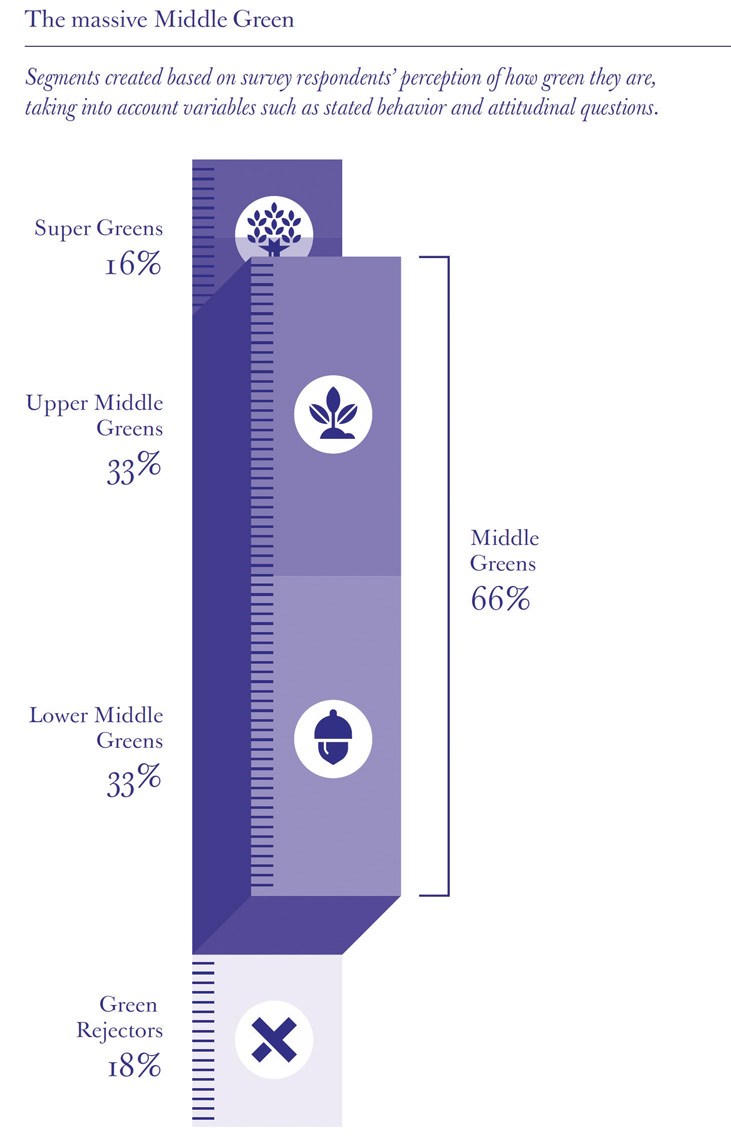
Companies who market to green consumers look at those on the spectrum as well as determine which consumers will provide the greatest volume potential. But with so many consumers firmly entrenched in the middle green, there exists opportunities to create products with mass appeal.
For consumer packaged goods purchases, women are typically the primary target audience as they still do the bulk of today’s household shopping. Seventh Generation, a sustainable personal care and household cleaning products manufacturer, targets the middle green as well as new moms, whom they find to be especially interested in making the world a better place for their newborns.Romy Ribitzky, “Seventh Generation Embarks on First Ever National Ad Campaign,” Portfolio.com, February 11, 2010, http://www.portfolio.com/industry-news/advertising-marketing/2010/02/11/seventh-generation-embarks-on-first-ever-national-ad-campaign.
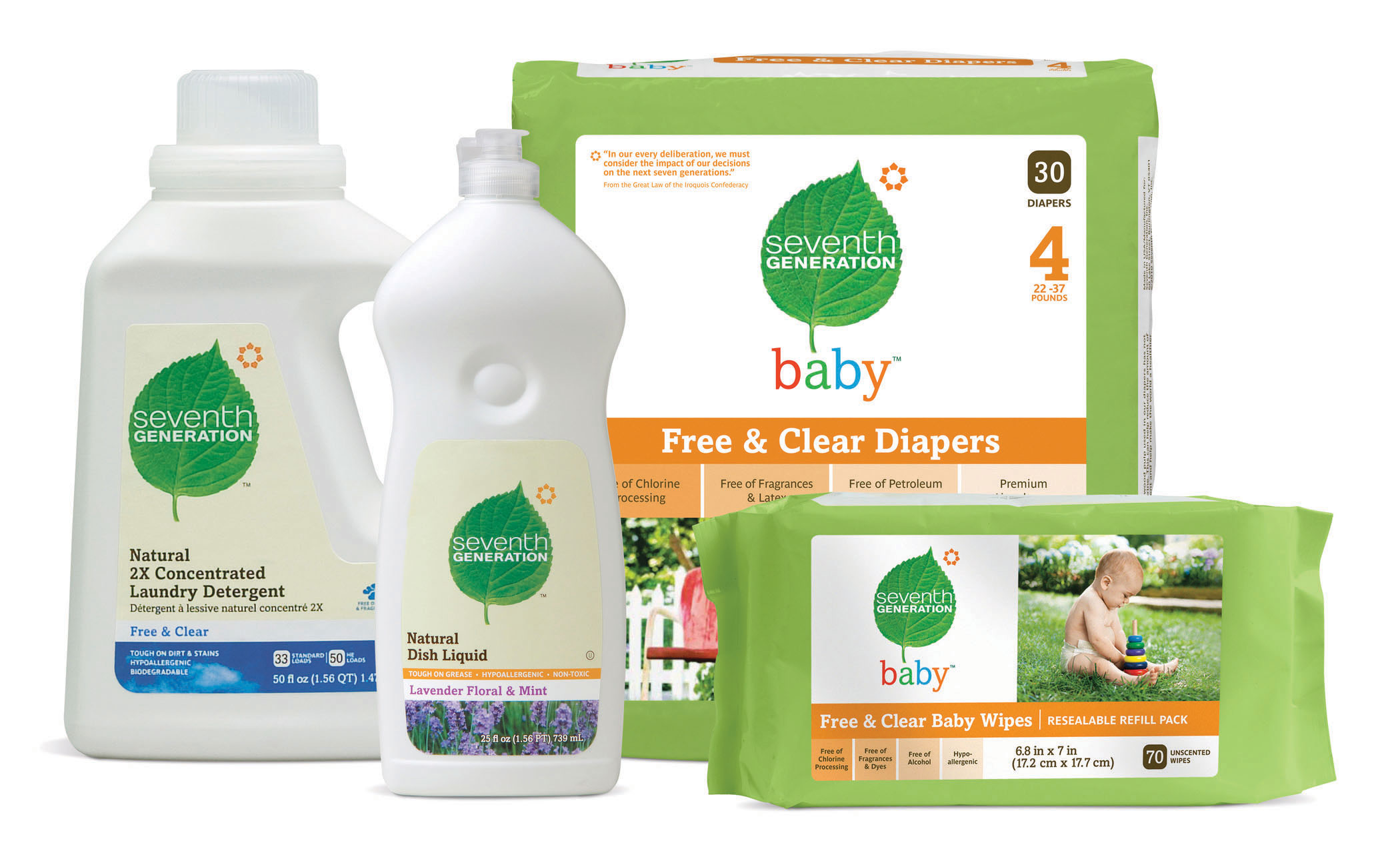
Consumer Packaged Goods
Consumer packaged goods are a type of good that is consumed every day by the average consumer. The goods that compose this category are ones that need to be replaced frequently, compared to those that are usable for extended periods of time. Examples are laundry detergent, food, shampoo, soap, and beverages.
Other companies target the super green. Super green consumers may undertake costly actions in order to signal themselves as such; this has been called conspicuous conservation.Much of this paragraph is drawn from Steven Sexton and Alison Sexton, “Conspicuous Conservation: The Prius Effect and Willingness to Pay for Environmental Bona Fides” (unpublished manuscript, April 2011). Car ownership decisions are one of the most visible consumption decisions households make. Since the introduction of the Toyota Prius in the United States in 2001, a growing number of vehicle models have been introduced with features that reduce environmental impacts. The Prius was the only model that provided a unique exterior shape and a design that stood out and announced that it was different than standard vehicles. The Prius has emerged as the clear leader among twenty-four different hybrid models available in the United States, with 48 percent of the 290,271 hybrid cars sold in the United States in 2009. Prius’s success is particularly pronounced in communities with high percentages of super greens, such as Berkeley (California), Boulder (Colorado), and Portland (Oregon), who want to make public their environmental practices and beliefs. The Prius with its unique product design has successfully provided the vehicle for owner’s to signal their affinity for the environment allowing super greens to make a conspicuous statement about their conservation efforts.
Packaging
Packaging plays a critical role in the product’s sustainability. Consumers have increasingly been made aware of environmental packaging choices and are changing their behavior as a result. A leading example of this is with water bottles. Many consumers have made the switch from purchasing single-use plastic water bottles to using refillable water containers. In 2008, 2.5 million tons of plastic bottles and jars were thrown away.“Use-and-Toss Bottle Facts,” Reuseit.com, www.reuseit.com/learn-more/top-facts/plastic-bottle-facts. The extremely slow decomposition rate of plastic bottles leaves them to sit in landfills or litter oceans for years. As a result of increased consumer awareness and consumer demand, sales of reusable water bottles from environmentally friendly producers such as Sigg and Kleen Kanteen have come onto the market. Consumers still want clean, filtered water, and companies, such as Brita and PŪR, makers of water filters, have seen a 22.2 percent and 15.2 percent increase in sales during 2009, respectively.GreenerDesign staff, “Green Product Trends: More Launches, More Sales,” GreenBiz.com, April 23, 2009, http://www.greenbiz.com/news/2009/04/23/green-product-trends-more-launches-more-sales.
Another strong consumer packaging trend is the use of reusable shopping bags at grocery stores. Americans use one hundred billion plastic shopping bags every year and over five hundred billion are consumed globally. Of this, four billion become general litter.“Reusable Shopping Bags…What’s the Buzz?,” Notawaste.com, www.notawaste.com/articles/reusable_shopping_bags.html. Consumers and retailers are recognizing this, encouraging new behavior, and now it is almost fashionable to bring your reusable shopping bags to your local store. As of 2011, more than two-thirds of consumers indicated that they now use reusable shopping bags.
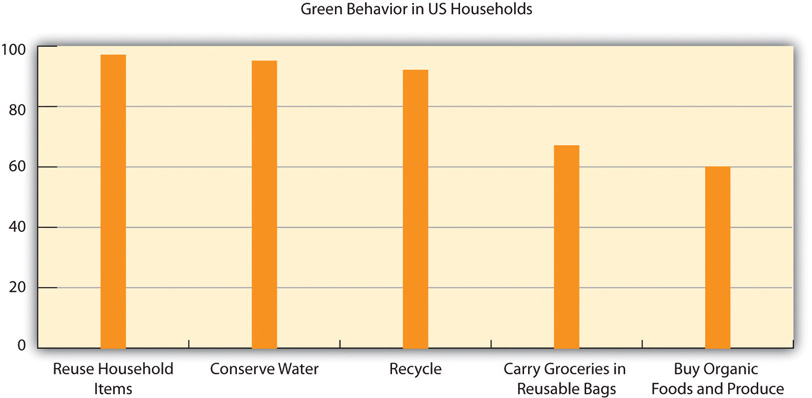
Another one of the keys to sustainable packaging is to ensure that the product-to-packaging ratio is “right-sized”—meaning that the product tightly fits in the packaging and there is no wasted use of packaging materials or “air space.” This is not only for the package itself but also for the packing case, which houses multiples of the products for shipping. This is often referred to as “cube optimization.” Cube optimization means right-sizing packages and fitting orders into packaging dimensions that are as small as possible without threatening the integrity of the order. Tight packaging-to-product ratios accomplish two things: (1) they reduce use of packaging materials and (2) they reduce energy costs as the pallet loads are more condensed and the manufacturer is not paying to transport “air.” Additionally, as more and more products are being shipped globally in containers by ocean, air, trucks, and rail, every inch of transport space and fuel usage is significant. This is an example of a win-win situation for the business and the environment, as shipping more in the same volume of space cuts shipping costs, impacting the business bottom line, while reducing the amount of energy (and associated greenhouse gas [GHG] emissions) needed, positively impacting the environmental “bottom line.”
Using renewably sourced materials is another way companies can create more sustainable packaging. Renewable materials are those that utilize forest, fiber, and agriculture products. Nonrenewable materials are those like plastic or Styrofoam, which are derived from petroleum and other fossil fuels.
Walmart’s Packaging Sustainability Initiative
Walmart has pledged to eliminate twenty million metric tons of GHG emissions from their global supply chain by the end of 2015. That is 150 percent of the company’s estimated global carbon footprint growth over the next five years.Walmart, “Remarks as Prepared for Mike Duke, President and CEO of Walmart Greenhouse Gas Goal Announcement,” news release, February 25, 2010, http://walmartstores.com/pressroom/news/9669.aspx. As part of this initiative, Walmart is planning to reduce its packaging globally by 5 percent versus their 2008 baseline. Through a sustainable packaging scorecard that Walmart has developed and put in place to help monitor their suppliers’ efforts, Walmart can track and use their immense weight to push suppliers to help them achieve their goals. The following are some of their notable successes with their suppliers to date:Kevin Hagen, “The Effects of Walmart’s Packaging Scorecard on Environmental Sustainability,” Yahoo!, January 22, 2010, www.associatedcontent.com/article/2614159/the_effects_of_walmarts_packaging_scorecard_pg2.html?cat=3.
- The transition of all liquid laundry detergents to concentrated versions has saved more than 125 million pounds of cardboard, 95 million pounds of plastics, and 400 million gallons of water.
- Packaging of Apple iPods was changed to 100 percent renewable, recyclable, and more sustainable materials.
- By reducing the packaging size of its Kid Connection line of toys, Walmart claims to have saved over $2.4 million in freight costs.
- The apple juice sold under the Member’s Mark label at Sam’s Club now uses 35 percent renewable energy in producing half the corrugated box packaging, and 50 percent of that corrugated packaging is from 100 percent recycled corrugated cardboard.
- All of Walmart’s cut fruit and forty-ounce vegetable trays and some of the nine-ounce trays are packaged with NatureWorks PLA, a biodegradable polymer. According to the company, by making that change to PLA in 2005 on just four produce items, they saved about eight hundred thousand gallons of gasoline and avoided more than eleven million pounds of GHG emissions.
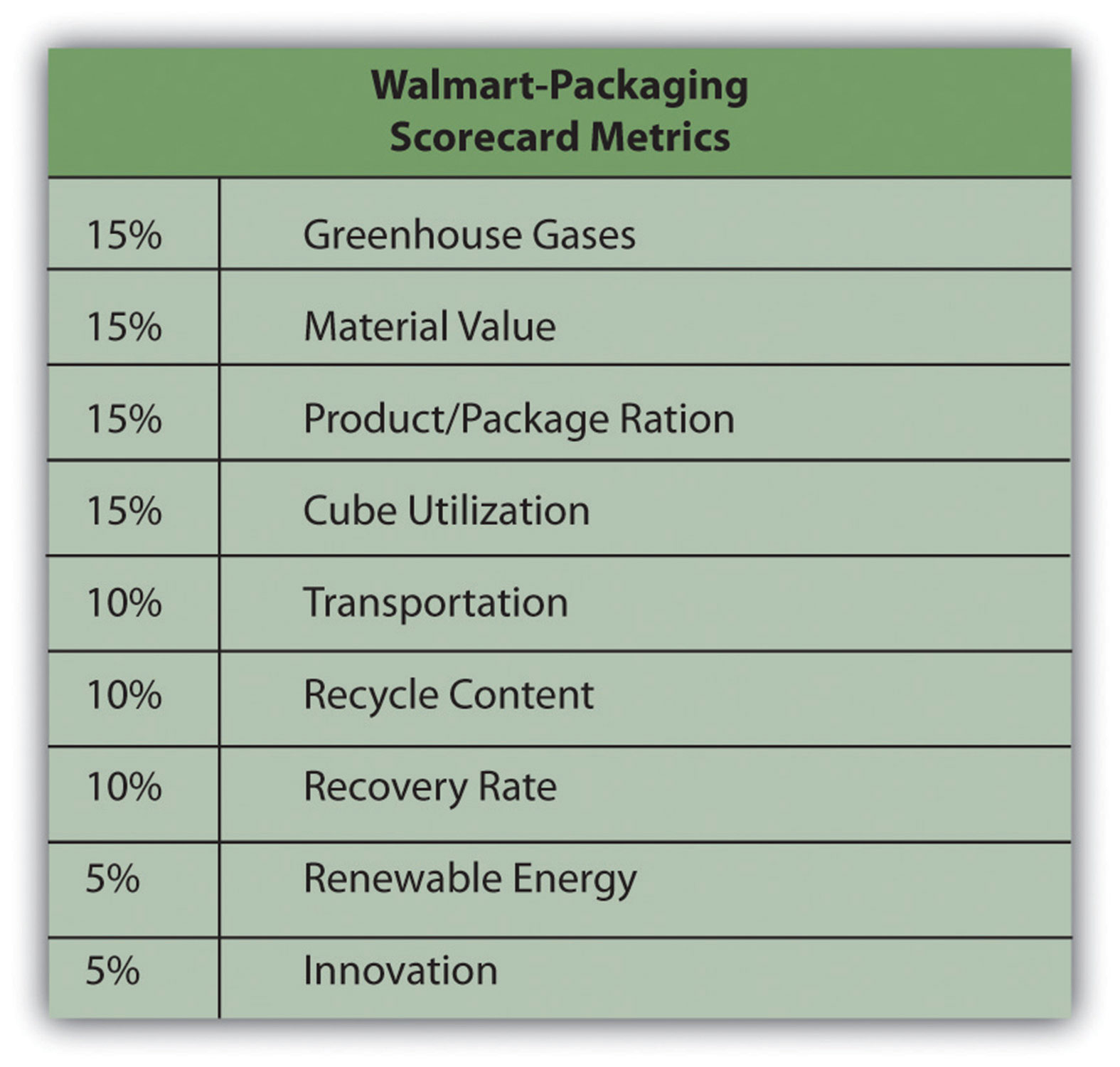
Source: Walmart.
Price
Price is the monetary (or bartered) amount a consumer pays for a product or service based on the product or service’s value or worth. For sustainable products, pricing has often been an issue limiting a product’s or service’s mass acceptance and market growth. Green products tend to be more expensive because the ingredients may cost more than their conventional counterparts. For example, organic food grown with natural fertilizers may be more expensive than those foods not utilizing natural fertilizers. Manufacturing and transportation costs can also be higher. For example, if the transport costs use a higher cost but lower polluting renewable energy fuel source, this will contribute to a higher price point. This creates a price gap between conventional products and those that are sustainable, which is often referred to as the “green pricing gap.” The higher price can be a barrier to wide market acceptance for many green products, as some consumers may want to purchase products that are better for the environment but either do not want or are financially unable to pay a higher price. For the large majority of consumers, if they do not receive additional value from a sustainable product, for example, in the form of reduced energy costs or longer product lives, they will not pay a premium for the sustainable product. If a product is competitive in terms of price, as well as product, place, and promotion, with traditional products and services, sustainability can give that product a competitive edge particularly among consumers with some interest in sustainability such as the middle green.
Marketers need to minimize the price barrier either by reducing the price point to be closer to its conventional counterparts or through marketing efforts to raise the perceived value to command a premium. Products, such as organic food brands, Earth’s Best, and Starbucks with their fair trade coffee, have done a commendable job in creating greater perceived value, thus commanding premium pricing. Some green product marketers use effective targeting to minimize the green price gap by targeting either people who are better off financially (those who can better afford to take environmental factors into their consumption decisions) or particular market or consumer groups, such as super greens and green regional markets (e.g., Portland, Oregon), with concentrations of potential customers who derive value in conspicuous conservation and demonstrating their environmentalism.Lindsay Kauffman, “Green as a Status Symbol: Why Increased Prices May Increase Sales,” Triplepundit.com, http://www.triplepundit.com/2011/05/green-status-increase-prices-increase-sales.
When Price and Quality Are the Same, Preferring to Support a Worthy Cause
A 2011 Cone/Echo Global Study revealed that when price and quality are about the same, consumers will pick the brand that is supporting a worthy cause like sustainability.“2011 Cone/Echo Global CR Report,” Cone Communications, www.coneinc.com/2011globalcrreport.
To view data about switching brands, visit www.echoresearch.com/data/File/pdf/Cone_pdfs/2011%20Cone_Echo%20Global%20CR%20Opportunity%20Study.pdf.
To that end, consider the American family of four who spends an average $115.60 per week on groceries.Food Marketing Institute, U.S. Grocery Shopper Trends (Food Marketing Institute, 2010), 107; “Key Facts,” Food Marketing Institute, accessed April 1, 2010, http://www.fmi.org. If the green products cost 10 percent to 25 percent more, their $115.60 per week yields significantly less purchasing power. This is even more pronounced in a weak economy. Yet many sustainable business practices, such as using materials with longer life, can save consumers money in the long term. Pricing is key in the marketing mix and marketers of sustainable products and services need to ensure the price and value equation is right for maximum success.
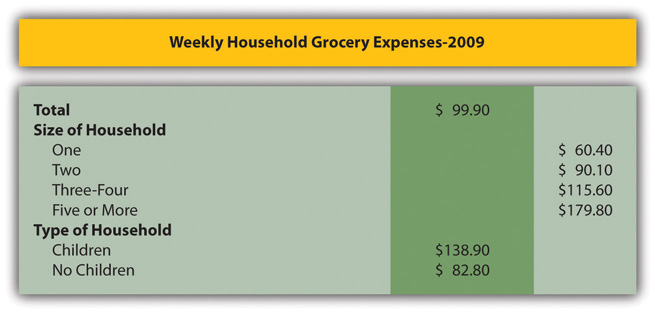
What Really Motivates Consumers: Green Earth or Green Cash?
Marketers take notice. One way to create a so-called win-win for consumers of sustainable products is to capitalize on what can help really motivate consumers to use green products—cost savings from using green products. Some consumers recognize this benefit as some green products save them money in the long run, such as driving a hybrid car saves at the gas pump; energy efficient light bulbs, refrigerators, washers, and dryers save on energy costs; water conservation shower heads save on the water bill; and using refillable water bottles is much cheaper than buying plastic water bottles at the store. Combining a concrete benefit like saving money with a sustainable benefit strengthens the brand messaging and may help to minimize the green pricing gap.
Place
Place is where the product can be purchased and includes how the product is distributed to the purchase location. Place can be a physical store as well as a virtual store on the Internet, also known as an e-tailer. Amazon is probably one of the best and biggest examples of an e-tailer as it has no “brick and mortar” storefronts.
Some sustainability focused retailers with brick and mortar storefronts are moving toward more sustainable practices. Retailers like Kohl’s are implementing solar energy panels in some of their stores. Walmart is building more energy-efficient stores, using more alternative fuels in its trucks, and reducing packaging.Dan Sewell, “Retailers See Green in ‘Green’ Business,” MSNBC.com, April 23, 2010, www.msnbc.msn.com/id/36739333/ns/business-going_green/t/retailers-see-green-green-business.
A place-related sustainable marketing area of increased interest is buying locally. According to the 2011 Nielsen global online consumer survey, belief in the positive impact of local products is highest in North America, where 65 percent of consumers reported that local goods have a positive impact on the environment.
Consumers are increasingly concerned about the environment and carbon emissions from transporting goods over long distances. Increasing numbers of local retailers are promoting themselves as local with the associated environmental and community economic benefits associated with local residents buying from local businesses compared to national and international companies. Some larger companies are recognizing the interest in buying local by increasing their use of local suppliers. This includes Whole Foods stores buying from local farmers and fisheries.
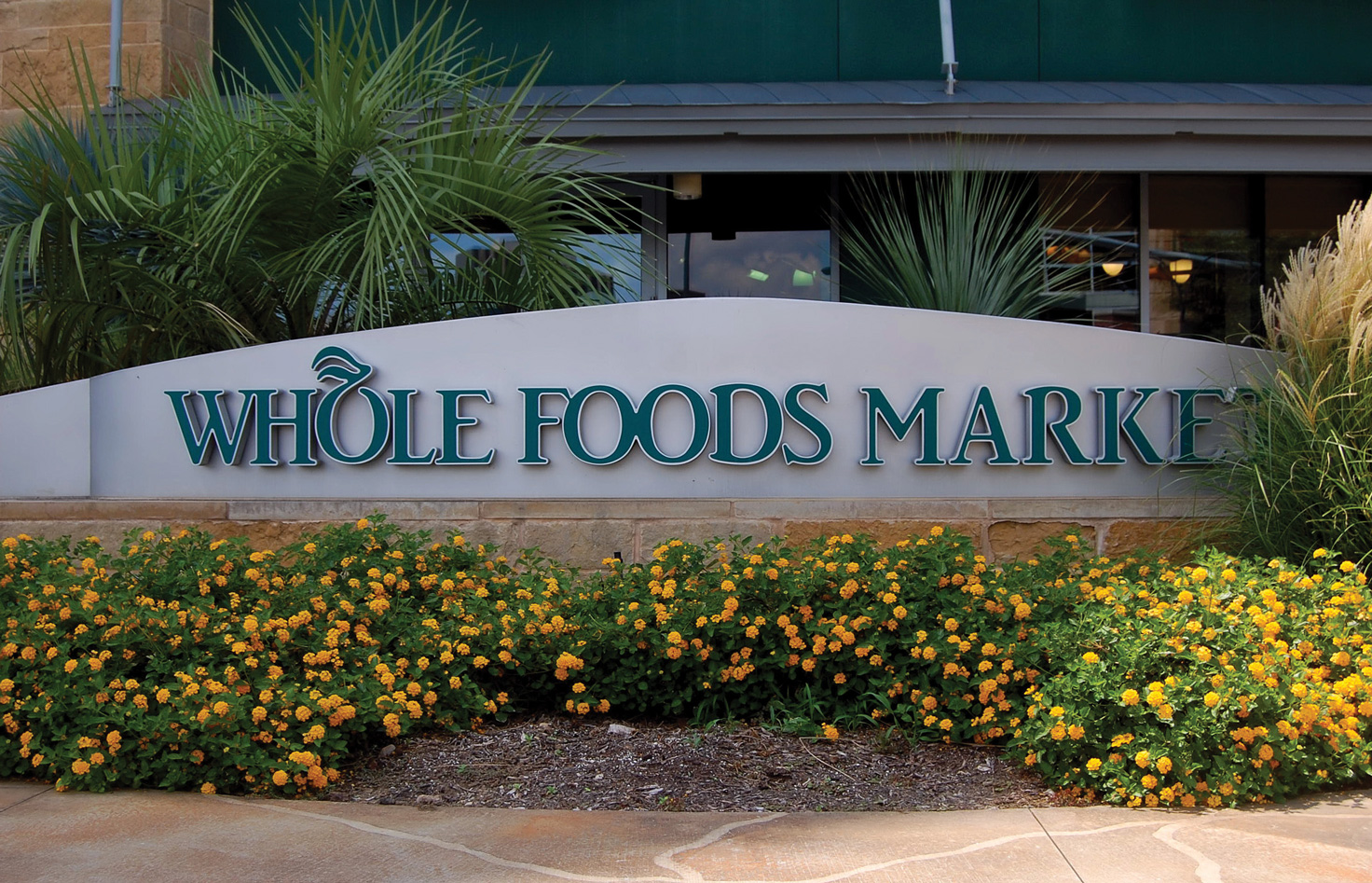
Locally Grown: The Whole Foods Market Promise
Whole Foods: Buy Local Strategy
We are permanently committed to buying from local producers whose fruits and vegetables meet our high quality standards, particularly those who farm organically and are themselves dedicated to environmentally friendly, sustainable agriculture. We are greatly increasing our efforts in this regard by further empowering our individual store and regional buyers to seek out locally grown produce.
What is local? Local produce is by definition seasonal. In spring in California, that means artichokes; summer in Michigan means blueberries and autumn in Washington means apples. We value this natural diversity, and each of our 11 regions has its own firm guidelines for using the term “local” in our stores. While only products that have traveled less than a day (7 or fewer hours by car or truck) can even be considered for “local” designation, most stores have established even shorter maximum distances. Ask a team member for your store’s definition of “local.”
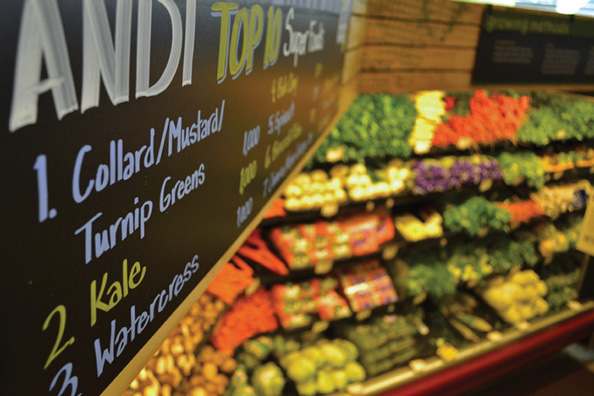
Source: “Locally Grown: The Whole Foods Market Promise,” Whole Foods Markets, http://www.wholefoodsmarket.com/products/locally-grown.
Retailers are increasingly scrutinizing their suppliers and demanding that the products that they sell meet higher sustainability standards. Walmart has implemented a sustainability scorecard that scrutinizes their suppliers’ and vendors’ entire product development cycle to ensure that they are implementing sustainable practices and continually looking to improve on these practices. If they are not, Walmart has stated that they will not carry the products. Other retailers are also beginning to demand that their suppliers meet sustainability hurdles including Safeway, Kroger, and Target.
The distribution channel is a significant consideration for sustainable marketing practices. Companies that are sustainability-minded are looking at ways to reduce their carbon footprint through a variety of efforts. Transportation with fuel-efficient loads, using alternative energy sources, and optimizing distribution routes are a few of the examples that can favorably impact the distribution channel in a sustainable way.
Promotion
Promotion is the communication tools and tactics that a company uses to promote and market their product. There are many ways to communicate a company’s products and benefits. Branding is the cornerstone of the communications platform.
A brand is an image in the consumer’s mind for a particular product or service. Strong sustainable brands should have a brand image of the product or service having a positive impact on people and the environment. Stonyfield’s brand positioning of “healthy food, healthy people, healthy planet” stems directly from the company’s strategic vision.
Advertising, public relations, personal selling, consumer and trade promotion, social media, digital marketing, and mobile marketing are all marketing promotion tools. When determining which mediums to utilize, marketers need to consider (1) marketing objectives, (2) effective reach of mediums among identified target audiences, and (3) budget. It is best to use a mix of promotion vehicles to most effectively and efficiently reach the target market and consistently apply the branding and messaging to maximize awareness. The messaging is best when it elicits a call to action on the consumer’s part—that is, purchase, engagement, and loyalty.
- Advertising encompasses communications designed to increase awareness and encourage the purchase of a particular product or service and is a paid medium. Advertising methods are more interruptive versus permission based (see the following description) and include television, print (newspapers and magazines), Internet advertising (such as banner ads), radio, billboards, and cinema advertising.
Nike recently made a big splash with its marketing focused on creating a better world through sports. Their efforts included the first 100 percent recycled television advertising, reusing and remixing film from their previous campaigns over the years to create a new spot to introduce their Better World campaign. The digital mash-up showcases the inspiration and history of the brand while bringing attention to the sustainability concept of reuse and reducing resources. This is also a good example whereby utilizing sustainability principles actually benefits the bottom line. By reusing existing film, Nike did not have to spend the thousands of dollars to produce a new television commercial nor expend energy costs for a production shoot. For perspective, an average television commercial cost exceeds $300,000,Tim O’ Leary, “The Latest on How Much It Costs to Produce a TV Commercial,” Bizzy Life, May 23, 2010, http://bizzylife.com/2010/05/the-latest-on-how-much-it-costs-to-produce-a-television-commercial. and an average television shoot is two to three days depending on how many locations are required.
Utility company the Denver Water Company created an advertising campaign that visually highlighted their campaign message of “Use Only What You Need.” This campaign was run on outdoor billboards, print ads, and bus and taxi ads.
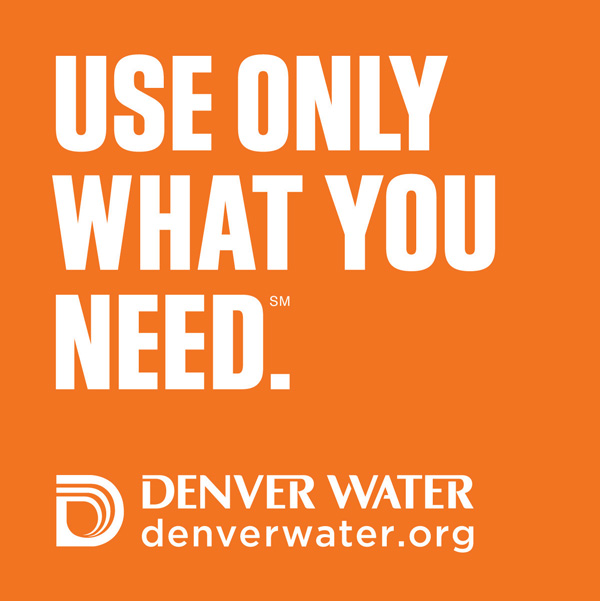
Shipping Giant Befriends a Forest: FedEx Sustainable Solutions
(click to see video)
FedEx recently launched a charming new ad campaign that highlights their sustainability initiatives. When consumers think of FedEx, sustainability doesn’t usually come first to mind, as it is a shipping and transportation business, which is a large user of fuel, not to mention paper products. But this new commercial highlights FedEx’s environmental efforts that help save forests and fuel and does so with Disney-esque charm. And when you strip away the Hollywood fairy tale dramatics, the spot reveals that FedEx is working hard at sustainable solutions for a better planet.
Makes you feel a little bit better when you absolutely have to have it delivered overnight.
- Public relations is about influencing, informing, and persuading the consumer and is often not a medium that is directly paid for, such as paying to take out ads in the newspaper, on the radio, or on television. Instead, you earn stories and coverage, which is called “earned media.”
There are many tools to use for public relations; among them are press releases, press conferences, fact sheets, letters to the editor, guest columns, radio and television talk show appearances, blogs, white paper publishing, speaker engagements, trade shows, and endorsements.
Toyota, when it launched Prius, one of the first hybrid cars, received endorsements from such influential eco-friendly organizations as the United Nations, the Sierra Club, and the National Wildlife Federation. These endorsements helped to establish Toyota’s green brand image and credibility. Utilizing press releases and print ads, Toyota helped to spread the word of their endorsements to maximize awareness. Prius has gone on to be the number one hybrid car in the United States.
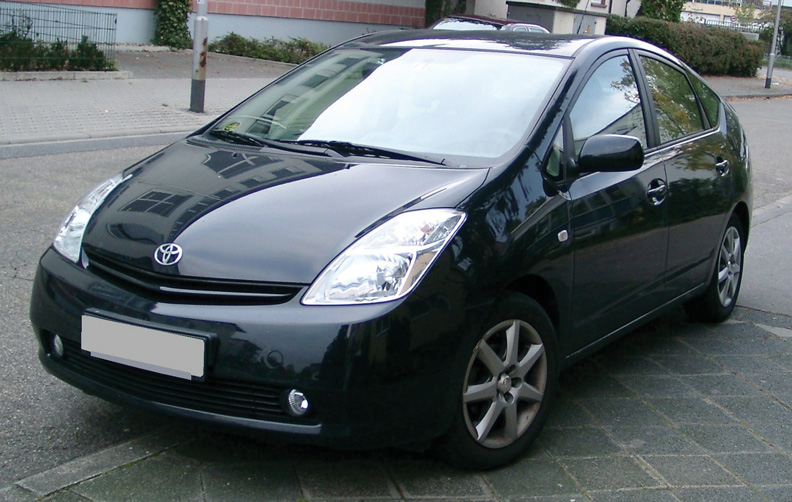
- Personal selling includes one-on-one selling, word of mouth, cold calls, sales meetings, product presentations, and demonstrations.
One of Simply Green’s (a biofuel company based in Portsmouth, New Hampshire; see Chapter 7) most successful marketing tools was cold calling (phone calls that are unsolicited and without any prior connection) to music industry performers touring in the region. It was through this personal selling technique that Simply Green landed an account filling famous musicians’ tour buses, which earned Simply Green instant fame and credibility.
- Consumer promotions are programs that directly help to influence the consumer to purchase the product and typically include some price incentive. For sustainable marketing they often include an incentive or donation that help people and the planet. Items such as free standing inserts (FSIs: the inserts that are typically in Sunday’s newspaper), coupons, buy one get one free offers (BOGOs), Groupon offers, in-store sampling, couponing, event marketing, sweepstakes, and other contests are key consumer promotion tactics.
Free Standing Inserts (FSIs)
FSIs are used as a consumer promotion tool and are typically inserted into Sunday’s newspapers. FSIs are used primarily to distribute coupons to encourage purchase.
Groupon (group + coupon) is an online digital coupon company (www.groupon.com) that provides deal-a-day coupons and price incentives. These deals are activated when a certain number of consumers agree to purchase at a specified discount rate.
Video Clip
Toms Shoes: “One for One Movement”
(click to see video)
Blake Mycoskie started Toms Shoes on the premise that for every pair of shoes sold, one pair would be donated to a child in need. Toms Shoes recognized that consumers want to feel good about what they buy and thus directly tied the purchase with the donation. This consumer promotion is a buy one give one. In just four years, Toms Shoes has donated more than four hundred thousand shoes, evidence that consumers have clearly embraced the cause.
- Social media involves the use of sites, such as Facebook, Twitter, Foursquare, LinkedIn, and YouTube, among others, to help generate awareness and get consumers engaged in a relationship with a brand and talking to each other about the brand. Social media are permission-based marketing, and consumers have to engage on their own and give “permission” to marketers to engage with them (e.g., when you “Like” a product or service fan page on Facebook or you view a promotional YouTube video or sign up for a blog RSS feed). This is different than interruptive marketing, which consumers usually have little control over (although DVRs are making it possible for consumers to not have to watch television advertising).
Using the power of social media, two CEOs created a “rap off” contest utilizing YouTube videos, Facebook, and Twitter. CE-YO Gary Hirshberg, of Stonyfield Yogurt (see Chapter 13), and CEO Seth Goldman, from Coca-Cola’s Honest Tea, became dueling rappers to promote organics for Earth month. Hirshberg and the “Stonyfield Moms” created a rap video about eating organic (http://www.youtube.com/watch?v=SCA6P9lsEfw&feature=pyv&ad=8718280378&kw=organic%). Not to be outdone, Goldman, who is a longtime friend of Hirshberg’s, thought that they at Honest Tea could do a better rap video and responded with the rap, “Rethink What You Drink” (https://www.youtube.com/watch?feature=player_embedded&v=jeF-65eDLc0#!).
Consumers voted on Facebook for the best rapper team and could upload their own organic rap video to win cash and a supply of Stonyfield Yogurt and Honest Tea. Both Stonyfield and Honest Tea used social media to engage consumers for a sustainable mission and actively encouraged consumer participation. The campaign went viral, receiving many website hits, likes on Facebook, tweets and retweets, and YouTube visits.
Tom’s of Maine, a Kennebunk, Maine–based personal care company owned by Colgate and well known for its sustainable positioning, uses social media to engage their consumers. For example, they introduced their new Wicked Fresh toothpaste and mouthwash with ads running on Facebook’s newsfeed page, a “Wicked Fresh” sweepstakes, a contest, and an online instant win game. The company also used Twitter to promote the contest.
- Event marketing is either the use of an existing event or the creation of an event to engage prospective consumers, build awareness, and market a company’s products and services. One of the simplest examples is the use of trade shows and exhibits. Other methods include creating flash mobs, interactive exhibits, pop-up stores, or other means to stage events.
Flash Mobs
Flash mobs are a group of people who assemble suddenly in a public place and perform a choreographed demonstration or performance that catches consumers unaware. Flash mobs are organized via telecommunications or social media.
Pop-up stores are portable store kiosks that are used to catch consumers in high-visibility locations and are only on display for a short period of time. They can be used at sporting events, concerts, or other high-traffic locations. For food and beverage pop-up stores, sampling is often a key marketing tactic used to entice purchase.
Volkswagen creates interactive exhibits in key cities globally to help consumers change their habits to reduce their carbon footprint. Titled “The Fun Theory” (http://thefuntheory.com), they have built interactive exhibits, such as glass bottle recycling bank arcades and piano-based steps in subways that play musical notes when stepped on to encourage more walking versus riding the escalator. By making consumer habit changes fun, Volkswagen is making an impact.
- Digital marketing is primarily the use of web-based marketing tools. This would include a company’s website, search engine optimization (SEO), pay-per-click, retargeting, e-mail, RSS, blogging, podcasting, and video streams, to name a few. The Internet can be used with push or pull techniques. Digital marketing can be used to “push” a message to the target market via e-mail, IM, RSS, or voice broadcast, and it can also be used to “pull” content via a banner ad and pay-per-click search terms.
Seventh Generation (see Chapter 8), a national manufacturer and distributor of environmentally friendly household and personal care products, recently has been successfully utilizing digital marketing techniques including SEO, retargeting (generating ads that follow consumers by placing cookies on their site based on previous site visits), and pay-per-click.
- Mobile marketing is on the rise, especially with the increasing penetration of smartphones. Currently, the Nielsen Company puts smartphone household penetration at 40 percent, but it is growing quickly.Nielsen, “In US, Smartphones Now Majority of New Cellphone Purchases,” Nielsenwire, June 30, 2011, blog.nielsen.com/nielsenwire/online_mobile/in-us-smartphones-now-majority-of-new-cellphone-purchases; Graceann Bennett and Freya Williams, Mainstream Green, 2011, assets.ogilvy.com/truffles_email/ogilvyearth/Mainstream_Green.pdf; Stephanie Clifford and Andrew Martin, “As Consumers Cut Spending, ‘Green’ Products Lose Allure,” New York Times, April 21, 2011, www.nytimes.com/2011/04/22/business/energy-environment/22green.html?pagewanted=2&_r=2; [citation redacted per publisher request]; Wikipedia, s.v., “Greenwashing,” http://en.Wikipedia.org/wiki/Greenwashing; Arthur Thompson, A. J. Strickland, and John Gamble, “Five Generic Competitive Strategies,” in Crafting and Executing Strategy, 17th ed. (New York: McGraw-Hill, 2009); “Seventh Generation’s Mission,” Seventh Generation, www.seventhgeneration.com/seventh-generation-mission; “Seventh Generation,” Behind the Brand, www.gobehindthebrand.com/498341/Behind-the-Brand-br-Seventh-Generation-br-Jeffrey-Hollender#.TitH0s0xYyM; “‘Green’ Household Cleaning Products in the U.S.: Bathroom Cleaners, Laundry Care and Dish Detergents and Household Cleaners,” Packaged Facts, http://www.packagedfacts.com/Green-Household-Cleaning-2554249; Laurie Burkit, “Seventh Generation Protecting Its Turf,” Forbes, January 18, 2010, http://www.forbes.com/2010/01/18/seventh-generation-brand-awareness-cmo-network-chuck-maniscalco.html; Kari Lipshutz, “Once You Go Green, You’ll Probably Go Back,” AdWeek, April 22, 2011, http://www.adweek.com/news/advertising-branding/once-you-go-green-you-ll-probably-go-back-130883; “Arm & Hammer’s New Cleaners Not Only Greener, They’re Cheaper,” EnviralMarketing.com, www.enviralmarketing.com/2008/10/22/arm-hammers-new-cleaners-not-only-greener-theyre-cheaper; Stephanie Clifford and Andrew Martin, “As Consumers Cut Spending, ‘Green’ Products Lose Allure,” New York Times, April 21, 2011, www.nytimes.com/2011/04/22/business/energy-environment/22green.html?pagewanted=2&_r=2; “Seventh Generation Corporate Conscious Report,” Seventh Generation, www.7genreport.com/introduction/performance.php; “Big Changes at Seventh Generation,” 7Gen (blog), June 1, 2009, www.seventhgeneration.com/learn/blog/big-changes-seventh-generation; Marc Gunther, “Seventh Generation Sweeps Out Its Founder,” Marc Gunther, November 1, 2010, www.marcgunther.com/2010/11/01/seventh-generation-sweeps-out-its-founder; Alex Goldmark, “Seventh Generation Snags Burt’s Bees CEO to Replace Founder,” Good Business (blog), February 10, 2011, www.good.is/post/seventh-generation-gets-a-new-ceo-john-replogle-from-burt-s-bees; Priti Ambani, “Jeffrey Hollender & Seventh Generation: Lessons Learned at the End of a Chapter,” Ecoprenuerist, June 27, 2011, http://ecopreneurist.com/2011/06/27/jeffrey-hollender-seventh-generation-lessons-learned-at-the-end-of-a-chapter; Jonathan Bardelline, “Clorox Income Falls as Recession Slows Green Brands,” GreenBiz.com, May 3, 2011, http://www.greenbiz.com/news/2011/05/03/clorox-income-falls-recession-slows-green-brands. Mobile advertising and the use of QR (quick response) codes is an effective way to engage consumers. QR codes are two-dimensional (2D) matrix barcodes that can hold thousands of alphanumeric characters of information. When consumers “snap” them on their smartphones, the QR codes can take them to a special mobile-enabled site that provides content and incentives to promote a product. In today’s digital world of immediacy, consumers want instant access to what’s relevant and mobile marketing techniques are being used to make that possible.

Sea Bags, a Portland, Maine–based company that makes handmade tote bags from recycled sails, is using a strategic approach with QR codes, incorporating them into its marketing strategy. The QR code directs consumers to a mobile-enabled website that shows a video portraying the company story and commitment to recycling, detailing how they use recycled sails to make their product. Future plans are to include bag tags (also made of recycled sails) with QR codes, which tell consumers their sail’s history and sailing journey around the world.
- Grassroots promotion and marketing combines some of the different promotional approaches in a focused, creative, and low-cost way that is often local or community based. It can be particularly useful for start-up ventures. It uses public relations (such as local press and media stories), blogs, social media, and community event planning and participation to drive qualified leads to company websites and physical locations for purchases.
Andrew Kellar, the founder of Simply Green, used grassroots marketing with a focus on company participation with a nonprofit organization (the New Hampshire Green Alliance) and high-visibility sales with well-known early adopter customers (touring rock band buses) to build up its customer base to over five hundred in just one year at a very low marketing cost. (See more details in Chapter 7.)
Honest Tea’s Honest Marketing
When Coca-Cola acquired Honest Tea, they began to approach the marketing plan the way the giant marketing behemoth always did—with plenty of national television advertising, deep trade promotion discounts, and slick shelf placement and promotion at retail. The traditional marketing efforts, which normally work well for a more traditional CPG brand, were a flop. Why? Because a big splashy marketing campaign was not in keeping with their “honest” brand image nor did it capitalize on the way that Honest Tea’s following had been built. Honest Tea’s success had been developed through grassroots marketing, which gave the brand an elite following that said, “We are not like everyone else—we require something special.”
Their Honest Cities campaign worked particularly well; Honest Tea set up displays with bottles of tea with a one-dollar collection barrel next to the pallets—purchases on the honor system. They promoted Earth Day by handing out reusable shopping bags with each purchase of Honest Tea. The brand built its presence first in a local market then spread out to the region and then moved to the next local market; the brand then positioned itself to grow into the next region. In addition, the brand continued to focus on the health food chain channel like Whole Foods—not a stronghold for the traditional Coke beverages.Denise Harrison, “Honest Tea Teaches Coke a Lesson,” Simplified Strategic Planning (blog), www.cssp.com/strategicplanning/blog/?p=871. So when the big marketing campaign failed, what did Coke do? Coca-Cola went back to basics to effectively develop and implement a marketing plan that personified the brand image and even reprised the Honest Cities campaign, refreshed, of course, using pop-up stores called “The Honest Stand” and social media.Kyana Gordon, “Honest Tea Campaign Stimulates Sales Growth, Brand Awareness, and Honesty,” PSFK, March 9, 2011, www.psfk.com/2011/03/honest-tea-campaign-stimulates-sales-growth-brand-awareness-and-honesty.html.
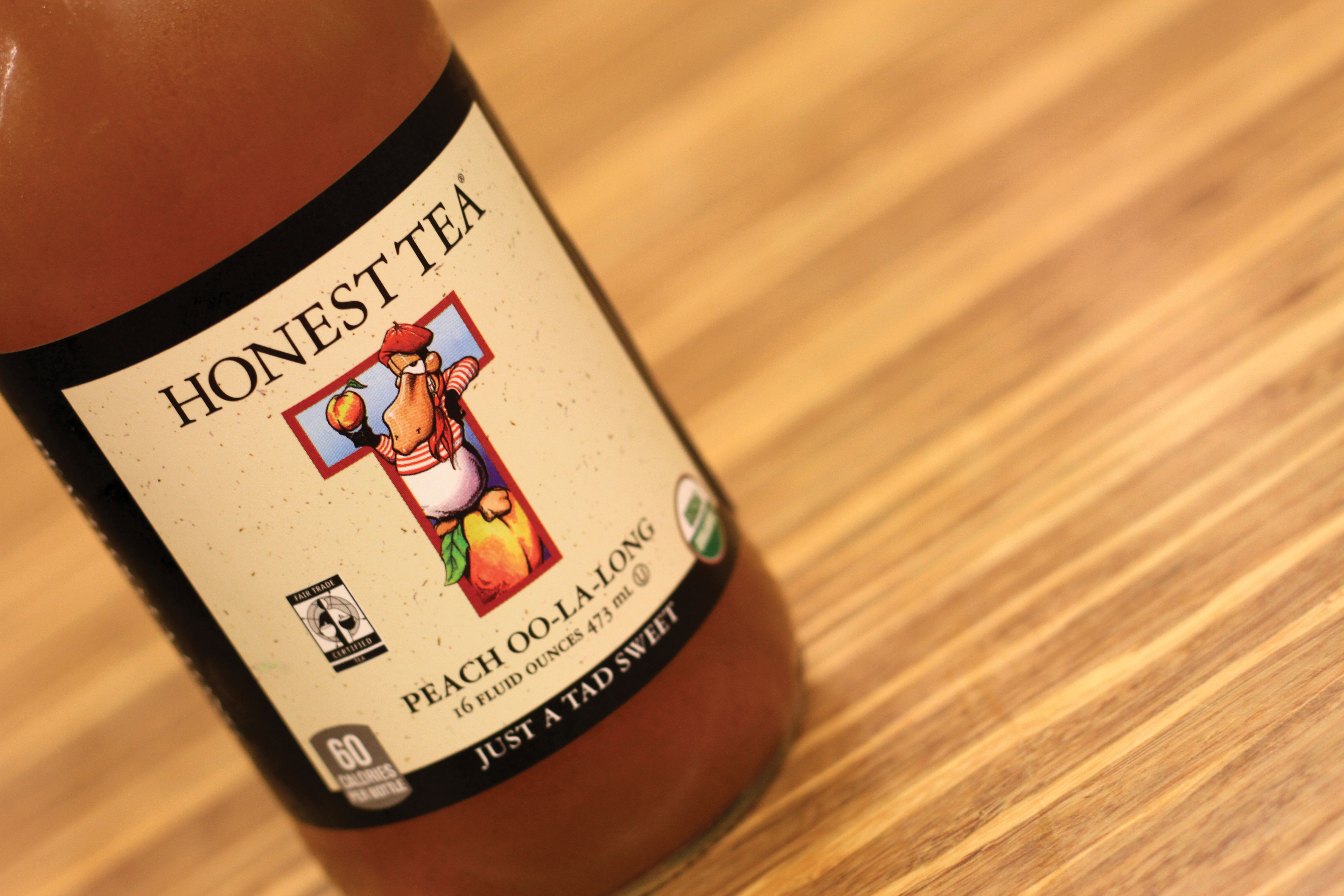
- A sustainable marketing strategy works best when it adapts and complements the overall corporate sustainability vision of the company, personifies the brand image, and is clearly and transparently executed throughout all marketing elements.
- For an effective sustainable marketing approach, the four Ps, product, price, place, and promotion, should be based on sustainability principles and should align with overall marketing strategy.
- Consumer target market segmentation is effective to better tailor marketing efforts to those consumer’s that align best as potential buyers or customers of a given product or service.
- Physical products can be made more sustainable through considering ways to minimize materials use, minimize the negative impact of the production process, and maximize the efficiency of the distribution process.
- Packaging changes, such as encouraging reusable bags, a tighter packaging-to-product ratio, or cube optimization, can be effective ways to reduce the environmental impact of a product while increasing profitability.
- Sustainable goods can be more expensive to produce than conventional alternatives as a result of potentially higher-cost raw materials, methods of production, and renewable resources. This should be taken into consideration when developing the branding, developing the marketing mix, and focusing on a market segment.
- A mix of promotional mediums is best to effectively and efficiently reach the target market with a consistent branded message and call to action.
Walmart is using their retail power to pressure their suppliers and vendors to help the company achieve its sustainability goals. How do you feel about this approach? Contrast it versus P&G’s approach.
It has been viewed by some that Walmart’s sustainability efforts are a shallow public relations effort to help create a better corporate image, especially after much negative publicity that it is not substantive and meaningful. What do you think?
Provide an example of a product or service that adheres to sustainability principles and discuss the four Ps they use in the market. What is working well for them and what would you suggest for them to do to improve?


